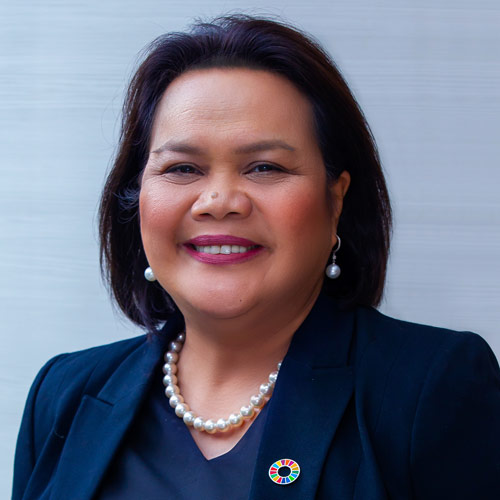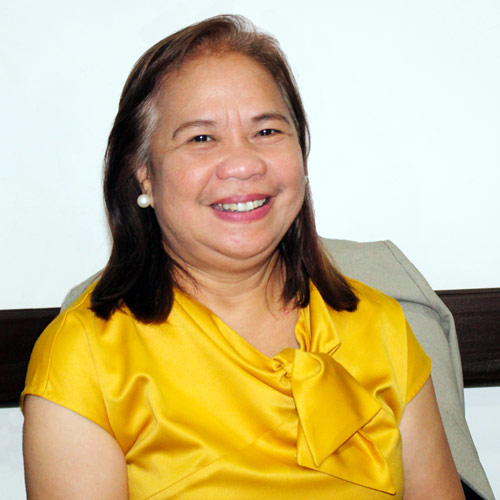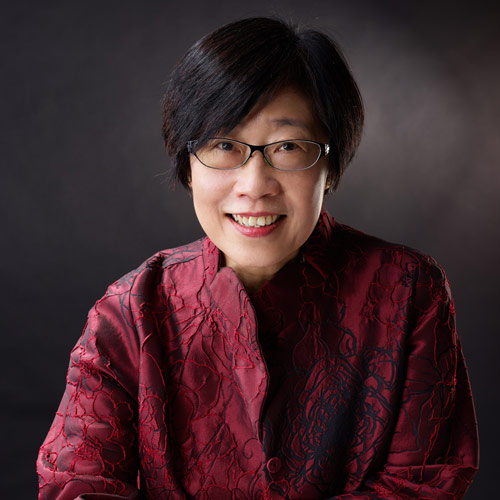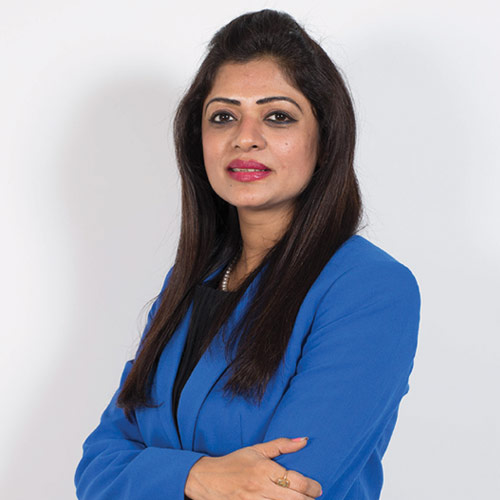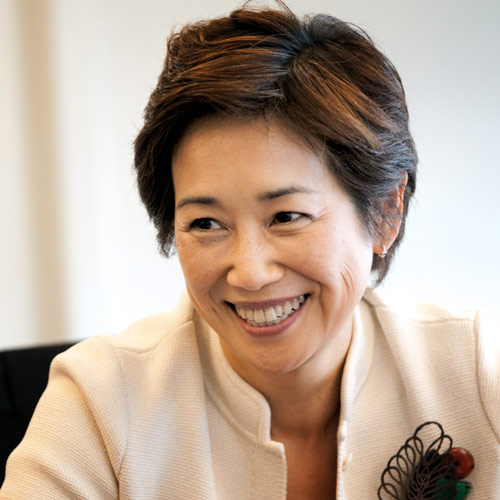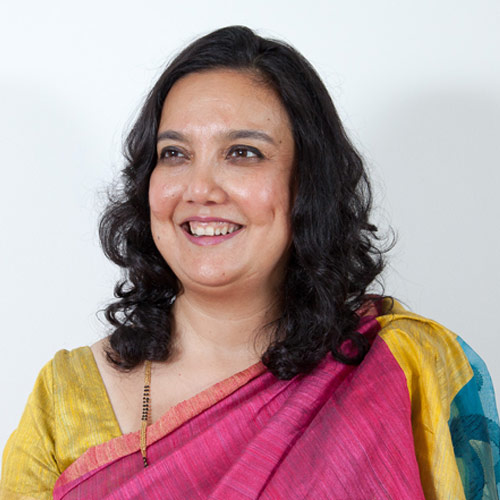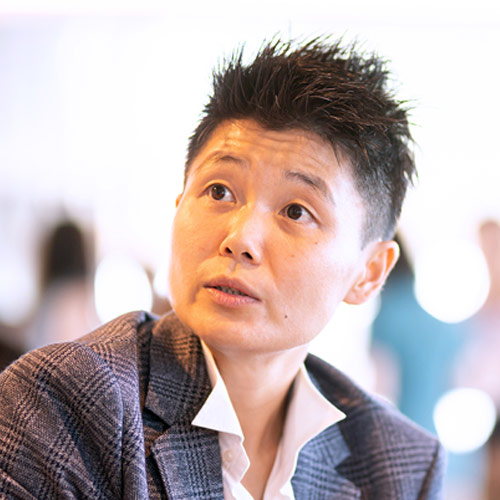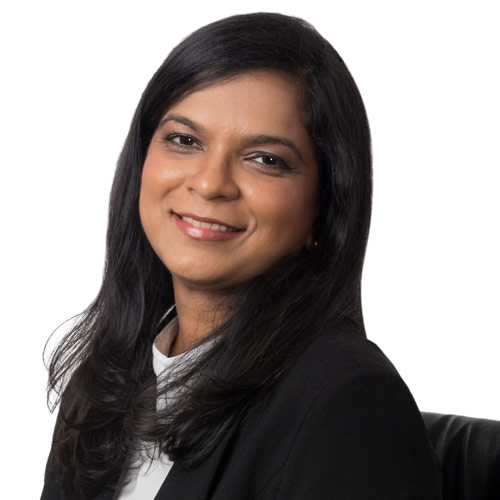Asia’s Top Sustainability Superwoman 2019
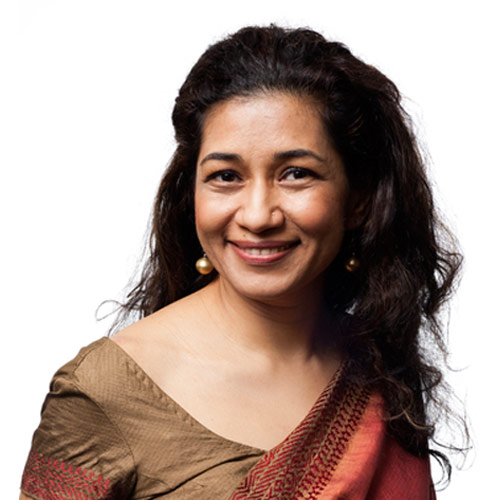
1. What have been your top achievements in sustainability so far?
I am excited to be celebrating IIX’s ten-year anniversary this year, and I am especially proud of how we have embraced innovation across all of our work—as part of our drive to create more inclusive markets and empower underserved women to be at the forefront of sustainable development.
We did this through a unique ecosystem approach that spans the impact economy, and which has enabled us to achieve many firsts. We created the world’s first and largest impact investing crowdfunding platform, Impact Partners, which connects 1,200 global accredited impact investors – US$12 billion assets under management – to high impact enterprises that we work with. We help impact enterprises become investment-ready through our impact assessments and our award-winning accelerator program ACTS, enabling them to overcome growth barriers and scale their solutions that are addressing some of the world’s most pressing social and environmental challenges.
Another first is our US$8 million Women’s Livelihood Bond 1 (WLB1), the world’s first impact investing instrument focused on women to be listed on a stock exchange and quoted Bloomberg, reporting both social and financial returns. It is creating sustainable livelihoods for over 385,000 women across Southeast Asia. The soon-to-be-launched Women’s Livelihood Bond 2 (WLB2) builds on the success of the WLB1 and is creating sustainable livelihoods for over 2 million women across Asia. The Women’s Livelihood Bond (WLB) Series – comprising of both the WLB1 and WLB2 – was recently globally recognized for its innovation and impact with the 2019 P4G State-of-the-Art Partnership of the Year and 2019 UN Global Climate Action awards.
Moreover, we have unlocked US$127 million in private sector capital, created sustainable livelihoods for over 77 million lives and avoided over 1 million metric tons of CO2 emissions to date. As defiant optimists transforming the world by mobilizing capital for social and environmental change, we have the mission to impact 500 million lives by 2035.
2. What challenges have you faced along the way and how have you overcome them?
My courage, vision and defiance to build a more inclusive world arose from my personal journey, beginning in the back streets of war-torn Bangladesh. As the first Bangladeshi woman on Wall Street, I understood the immense power of financial markets and grew determined to transform it for social good. Armed with my experience on Wall Street, Grameen Bank, and OneNest, being a woman of color as well as a serial entrepreneur, my contributions were soon recognized by the Rockefeller Foundation who invited me and other thought leaders to come together and innovate a new way to address global inequities (out of which the term “Impact Investing” was coined). With Rockefeller’s support, I founded Impact Investment Exchange (IIX). A decade later, my bold vision to transform financial markets for a more inclusive world has led to many firsts – as mentioned earlier. These successes are due to IIX’s unique ecosystem approach which spearheads the growth of the impact economy and enables everyone to play a role in sustainable development.
What keeps me going is defiant optimism, a belief that a lot of what IIX does is ahead of the curve and comes with the struggles of a pioneer. Whenever I deliver a speech or do a photoshoot, I specifically wear saris because when someone sees a woman in a sari, the immediate reaction is to think that they are provincial. A woman in a sari and finance? No way. But this is exactly why I do this – we need to consciously push the envelope in making people think out of the box, in this case, that a sari worn by women is not a symbol of weakness, which it is most of the time in our culture. It is a symbol of strength.
3. What are the biggest challenges and opportunities you face today as a sustainability leader?
As a woman of colour and serial entrepreneur, I understood the importance of building an ecosystem approach to impact investing. Success doesn’t come in a vacuum, you need a whole network of services, metrics, mentors, and partners that bring together high-impact enterprises looking to scale and impact investors ready to invest.
Our approach has been to work with the entire social capital markets value chain. We empower impact enterprises that are addressing the root causes of inequality and conflict; we value and include their most vulnerable beneficiaries in financial markets; we change financial systems to drive sustainable development; and we build opportunities for anyone, anywhere to contribute to a more inclusive world. In practice, we accomplish this through our proprietary impact assessments and catalytic accelerator program ACTS; our crowdfunding platform Impact Partners, which has over 1,200 impact investors worldwide; our innovative and blended financial products like the Women’s Livelihood Bond Series; and our education and advocacy work at the IIX Impact Institute.
This approach has been extremely effective in allowing IIX to “discover” local conditions—especially in understanding the intersectionality of gender with different forms of inequalities across emerging markets; to create solutions that are appropriate to those local conditions and meet the needs of underserved communities; and to “activate” the local market by educating and enabling everyone to play a role in creating impact.
To be frank, the journey is a lonely one. And there is ample evidence that not much has changed since my time working on Wall Street—for instance, in 2017, only 2.2% of venture capital funding went to women entrepreneurs , and are still 60% less likely to receive funding than men pitching the same idea .Similarly, entrepreneurs of color are three times less likely to access loans than white entrepreneurs.
IIX is now trying to do our part in changing this by building the impact investing ecosystem in Asia, advocating gender equality and sustainable development. We’re doing this through our newly launched Equity@Scale program in partnership with the Australian government, where we’re empowering everyone—leaders and organizations, men and women, with access to knowledge, networks, capital, and resources to transform the world for women’s empowerment.
4. What further action on sustainability do you have planned for the future?
With the success of WLB1, IIX is about to launch the Women’s Livelihood Bond 2 (WLB2). The WLB2 aims to demonstrate the replicability and scalability of the WLB model by increasing the bond size to US$150 million over 3 to 4 tranches, expanding to 5 countries, and moving beyond microfinance to support impact enterprises working in renewables and agriculture. In the future, IIX also plans to use the WLB model to issue bonds addressing other underserved facets of women’s welfare, such as health and climate resilience. Another demonstration of its replicability is IIX’s latest partnership with UN Women, which looks to replicate the structure of our Women’s Livelihood Bonds for a series of UN Orange Bonds in the coming future.
The WLB Series, a partnership-driven project addressing SDG 2: Zero Hunger has recently been selected by P4G, the Partnering for Green Growth and Global Goals 2030 Initiative, as the 2019 P4G State-of-the-Art Partnership of the Year. Additionally, the WLB2 is the recipient of the 2019 UN Global Climate Action Award, for which the United Nations Climate Change Secretariat (UNFCCC) specifically recognized IIX’s contribution to the UNFCCC’s focus area of Financing for Climate Friendly Investment, that highlights successful financial innovations for climate adaptation and mitigation. These awards are significant milestones for IIX in positioning the WLB Series as a top-of-the-class high impact investment.
5. Can you give any advice to aspiring sustainability superwomen out there?
While the journey is not an easy one, women – especially those of color – can embrace what it means to be bold, innovative, and creative—some might say crazy—with our approach and ideas towards creating impact. This has helped me become ahead of the curve, a pioneer in the space, although it also means you have to figure everything out on your own. That is why, I think, in the end, we describe ourselves at IIX as ‘defiant optimists’, constantly striving to redefine the narrative and challenge established systems. I hope that other women are ultimately empowered to do the same.
Looking ahead to the next ten years of sustainable investing, we must remain grounded by giving a voice to the voiceless, and empowering communities to have a value in financial markets. We must empower investors to invest in impact that matters to these communities. And finally, we have to bring everyone together—from bankers to lawyers, philanthropists to investors, governments to businesses—to create an inclusive and sustainable future for all.
